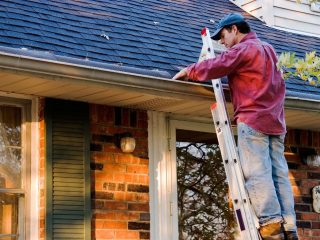
How to identify the source of the mud and
If you have a muddy yard, the first step in keeping it looking great all year long is to identify the source of the mud. Often, this can be due to poor drainage or heavy rains that cause excess runoff and pooling. Once you know what is causing your muddy yard, you can take steps to address the issue and prevent it from happening again.
Types of drainage systems that can help
There are a few different types of drainage systems that can help to prevent a muddy yard.
- French drains, for example, are a type of perforated pipe that is installed underground and helps to collect water from the surrounding soil and redirect it away from your property.
- Swales are another type of drainage system that can be used to create a channel or trench in your yard to redirect water away from the areas that are prone to mud.
- Other options for preventing muddy yards include using rain barrels and other water collection systems, installing permeable pavers or gravel, and planting vegetation that can help to reduce erosion and runoff.
Once you have implemented a drainage system or other strategies to keep your yard from getting muddy, it is important to maintain it on a regular basis to ensure that it continues to function properly. This means cleaning out gutters and downspouts, removing debris from drainage channels, and regularly inspecting your property for any potential problems. With a little bit of effort, you can keep your yard looking great all year long – no matter what the weather brings.
How to dry up muddy yard
If your yard is already muddy, there are a few things you can do to dry it up.
- One option is to use a power washer to spray the mud away. If you don’t have a power washer, you can also rent one from a local hardware store.
- Another option is to spread sand or sawdust over the mud to help absorb the moisture. Once the mud is dry, you can rake it up and dispose of it. If your yard is particularly muddy, you may need to repeat this process several times to get it completely dry.
- Once your yard is dry, be sure to take steps to prevent the mud from coming back by implementing a drainage system or other strategies as described above.
Ways to divert water away from your home
There are a few different ways that you can divert water away from your home and prevent it from pooling in your yard and causing mud.
- One option is to install gutters and downspouts around your home. This will help to collect rainwater and redirect it away from your property.
- Another option is to create a swale or other drainage channel in your yard.
- If you have a sloped lot, you can also plant vegetation that will help to slow down and direct water away from your home.
No matter what type of drainage system or other solutions you choose, it is important to maintain them on a regular basis to ensure that they continue to function properly.
Ranchwood offer three types of strong construction to divert water away from your home: Stick built, manufactured and modular. Stick built construction is done from scratch on site, manufactured construction is done off site and assembled on site, and modular.
There are a few different things you can do to keep your yard from getting muddy. By identifying the source of the mud and taking steps to prevent it, you can keep your yard looking great all year long.
French drains, swales, rain barrels, and permeable pavers are all effective ways to prevent runoff and pooling. Once you have implemented a drainage system, be sure to maintain it regularly to ensure that it continues to work properly.



